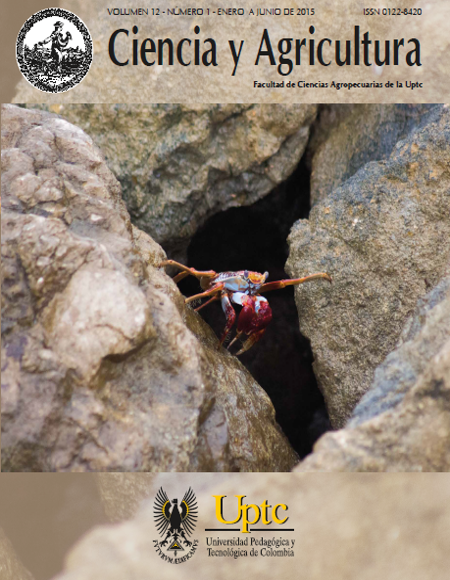Humic substances decrease the stress in layer hens during the post molting phase

Abstract
One of the productive practices in laying hens that causes controversy in the animal welfare area is the nutritional stress produced during the forced molt phase. The current research relates the experiment implemented to evaluate the effect of the Humic Substances (HS) on stress indicators during the post molting phase. 120 HyLine Brown laying hens were observed within the 60 first days of the post molting, which were divided in four groups: the first and second were supplemented with 0,1 and 0,2% of HS respectively, the third group was supplemented with 0,25 mg/kg of hydrochloride of levamisole, and the fourth was not supplemented at all; blood samples were taken the days 8, 30 and 60 to evaluate hematocrit and Heterophils/Lymphocytes relationship (H/L) and the tonic immobility was recorded from the days 30"‘ and 60"”. It was evidenced that the groups supplemented with HS improved the hematocrit by the day 30*, decreased the H/L relationship and the tonic immobility time days 30‘“ and 60‘“ (p<0,05).The results obtained in this research indicate that the HS from the cachaza, leaves and vinasse from the sugar production, perform as stress reliever agents in the early and middle phase of the post molting in Hy Line Brown laying hens.
Keywords
animal welfare, laying hens, nutritional stress, forced molt, humic substances, hematocrit, heterophils/lymphocytes relationship, tonic immobility.
References
- El-Deek A & Al-harthi M. Post molt performance parameters of broiler breeder hens associated with molt induced by feed restriction, high dietary zinc and fasting. Int J of Poult. Sci.2004; 3(7): 456-462.
- Alodan M., Mashaly M. Effect and induced molting in laying hens on production and immune parameters. Poult.Sci. 1999; 78: 171-177.
- Hassanien H. Effect of force molting programs on egg production and quality of laying hens. Asian JofPoult. Sci. 2011; 5(1): 13-20.
- Tega E., Ibrahim T. Effect of induced molting on fertility and hatchability chickens. Continental J. Animal and Vet Res. 2010; 2: 31-34.
- Akram M., Zia-ur-rahman C., Kim S. Effect on the induced molting on the relative weights and hormone levels of thyroid, ovary and adrenal glands in spent laying hens. Korean J InternMedPoult. Sci. 2002; 29: 243-247.
- Shini S, Kaiser P, Shini A, Bryden W. Biological response of chickens (Gallus gallusdomesticus) induced by corticosterone and a bacterial
- endotoxin. Comp BiochemPhys,part B, 2008; 149: 324-333.
- Sandoval G, Terraes J, Revidatti F. Fernández R, Gauna C, Martín G. Hematocrito, relación heterófilo linfocito e inmovilidad tónica en pollos con estrés psico-fisico crónico criados en jaulas. Comunicaciones científicas y tecnológicas, 2003; 026: 1-3.
- Eren M., Gezen S., Deniz G., Orhan F. Effects of liquid humate supplemented to drinking water on the performance and egg shell quality of hens in different laying periods. Revue. Med vet. 2008; 159(2): 91-95.
- Ergin O., Ocak N., Turan A., Erener G., Altop A. Performance, Carcass, gastrointestinal tract and meat quality traits and selected blood parameters of broilers fed diets supplemented with humicsubstances. J. Sci. Food Agr.2011; 92: 59-65.
- Sanmiguel R, Rondón I. Suplementación con sustancias húmicas en gallinas ponedoras durante la fase postmuda.Rev Ces MedZootec. 2014; 9(2): 169-178.
- Hy Line International. 2011. Manual de estándares de rendimiento.
- Abo Egla E., El-Samra H., Ismail F., Abd-El ghany F., Assar M. Effect of humic acid and BIOMOS supplementation on egg production and quality parameters in local hens.J.Anim Poult Prod. 2011; 2(4): 55-63.
- Yoruk M, Gul M, Hayirly A, Macit M. The effects of supplementation of humate and probiotics on egg production and quality parameters during the late laying period in hens. Poult.Sci. 2004; 83: 84-88.
- Elrom. Handling and transportation of broilers - welfare, stress, fear and meat quality. Part III: fear; definitions, its relation to stress, causes of fear, responses of fear and measurement of fear. Israel J VetMed, 2000; 55: 3.
- Tejeda A, Téllez I, Galindo F. Técnicas de medición de estrés en aves. Vet Mex,1997; 28(4): 345-351.
- Campos y Dávila. Changes in heterophil to lymphocyte ratios of heat-stressed chickens in response to dietary supplementation of several related stress agents. Arch. Geflu¨gelk, 2002; 66(2): 80-84.
- Ajakaiye J., Ayo J., Ojo S. Effect of heat stress on some blood parameters and egg production of shika brown layer chickens transported by road. Biol Res. 2010; 43: 183-189.
- Rath N., Huff W., Huff G. Effects of humic acid on broiler chickens. Poult.Sci. 2010;85: 410-414.
- Van Rensburg J., Van Rensburg C., Van Rissen J. In vitro and in vivo assessment of humic acid as an aflatoxinbinder in broiler chickens. Poult. Sci. 2006; 5: 1576-1583.
- Krams I, VrublevskaJ,Cirule D,Kivleniece I, Krama T. Aeterophil/lymphocyte ratios predict the magnitude of humoral immune response to a novel antigen in great tits (Parus major). Comp Biochem Phys. Part A 2012; 161: 422-428.
- Campos y Dávila. Effect of Photoperiod on Heterophil to Lymphocyte Ratio and Tonic Immobility Duration of Chickens.Poult.Sci. 2002; 81:1637-1639.